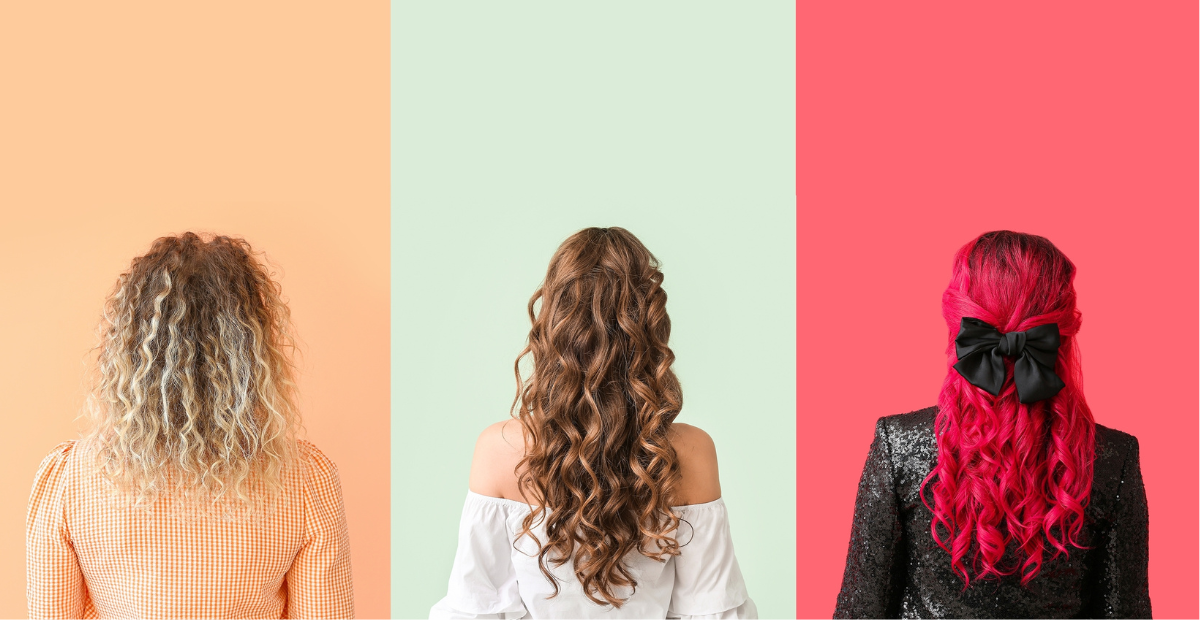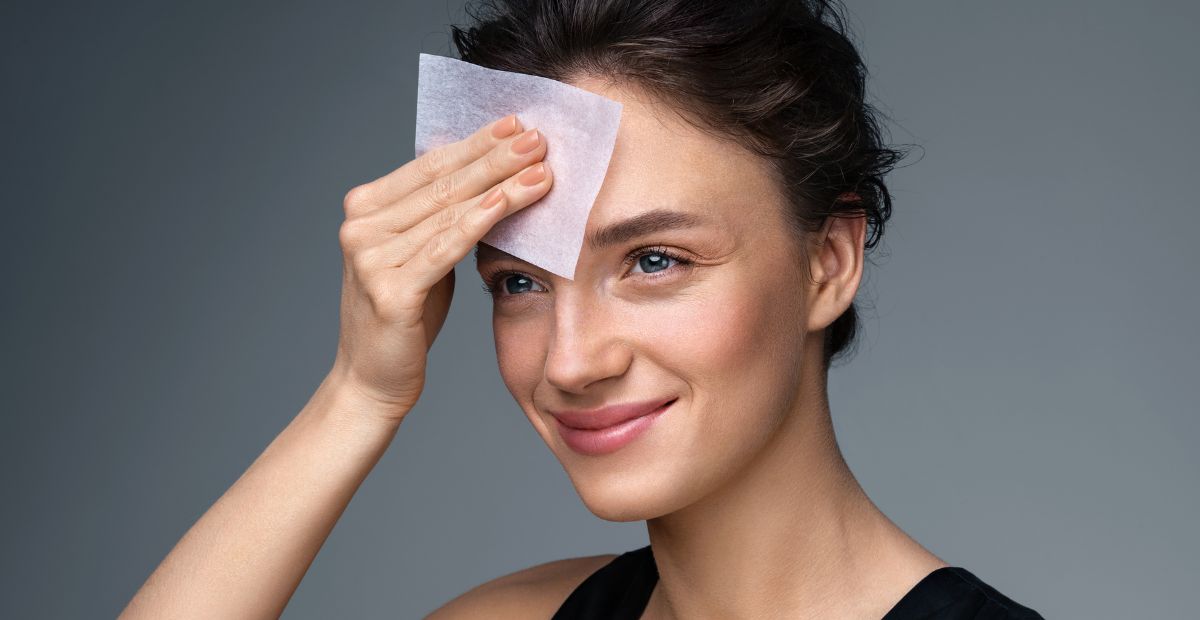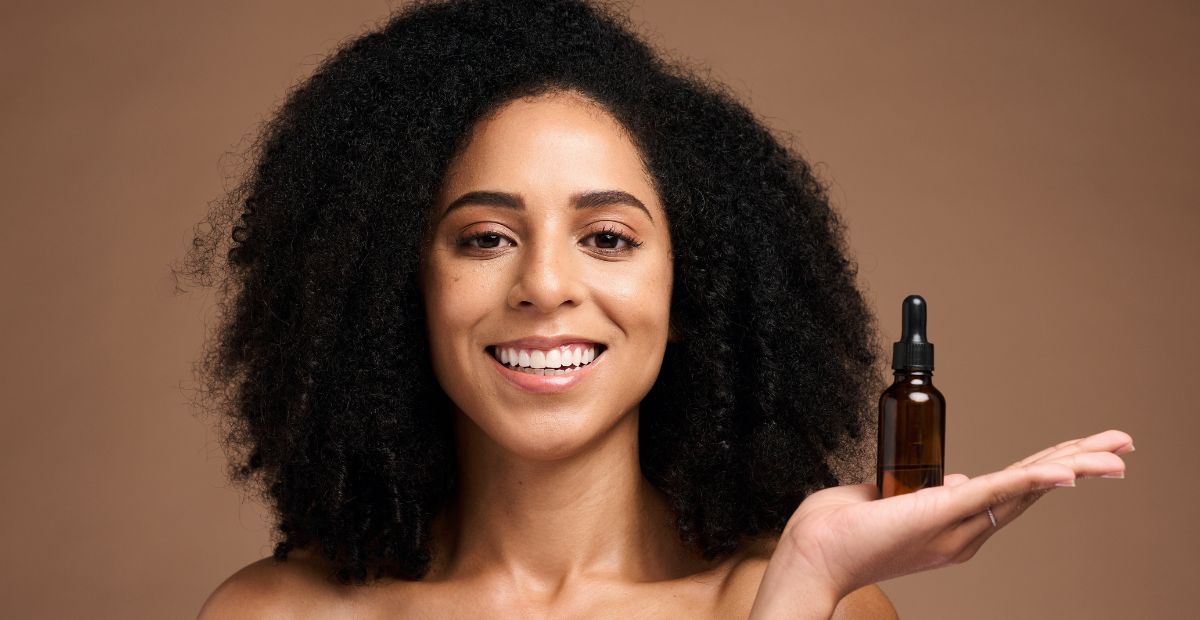Should I Pop My Pimple? When to Do It and When It’s a No-No
Onskin Content Team
Your guides through the skincare chaos

If a nasty unwelcome pimple has ever ruined your mood (and maybe even big plans for the night), you’re not alone. And if your first instinct is to pop it and go on with your day—you’re so not alone, too! Probably everyone at some point in their life has popped a spot and has a story about how it wasn’t a good idea. “So should I pop my pimple?”, you may ask.
Well, not all zits play by the same rules. While popping one spot may send it packing its stuff and leaving you for good, doing so with another could lead to an infection and even leave some gnarly scars. We know, no fun. Understanding which pimples to pop and how to do it safely is king—let’s zero in on that in today’s post.
The Un-Poppable Club
So, is popping pimples safe? Most dermatology experts will tell you they don’t recommend popping any pimples. And they’ve got a point—why risk spreading the infection and making the inflammation worse instead of letting it complete its life cycle naturally, with no marks left?
But hey, we totally get the “I want to make it disappear RIGHT NOW!” sentiment that comes with noticing a new pimple. Not to mention, sometimes you have an important event coming up, and giving the spot a good ol’ pop seems like an easy fix…
Until it isn’t. Let’s begin by drawing a line in the sand—there are types of spots you should never drain, no matter the temptation and even the possibility of those tactless folks commenting, “What’s that on your chin!?”
Blind pimples without a raised bump and no white substance on their surface
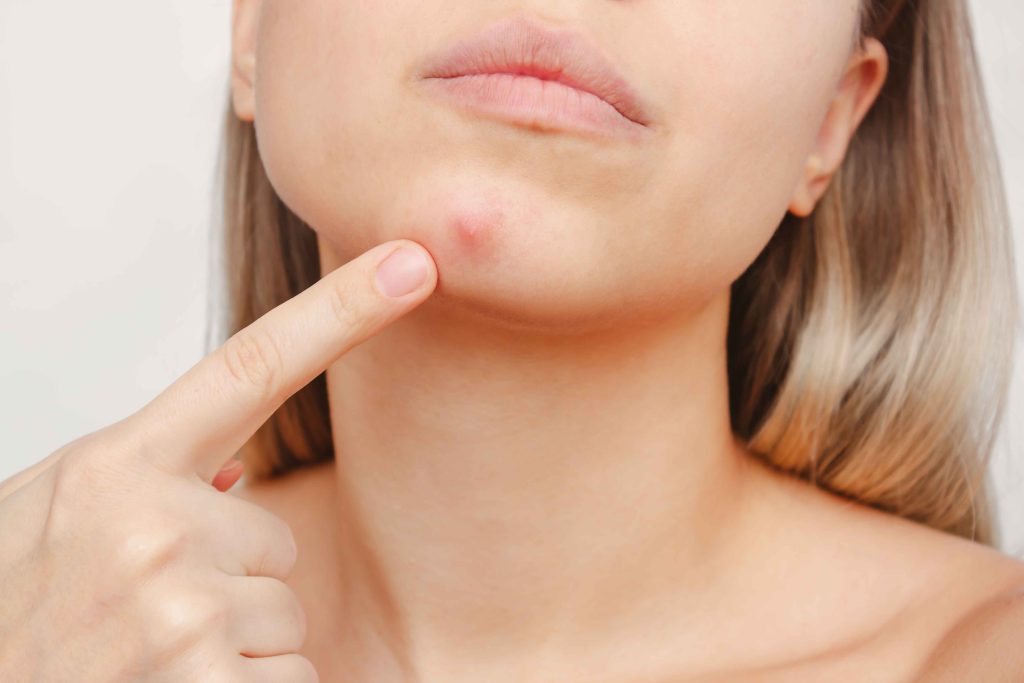
These zits are still in their “baby” era and are not yet close enough to the surface of the skin to be squeezed. By forcing such flare-ups to erupt, instead of a small, hardly noticeable blemish, you’ll probably see its boosted angrier and bigger version. On top of that, these stubborn blemishes have a long memory and might leave behind permanent scarring if you mess with them too soon.
Deep, inflamed blemishes that hurt when touched, especially if your skin is acne-prone, and you get those regularly.
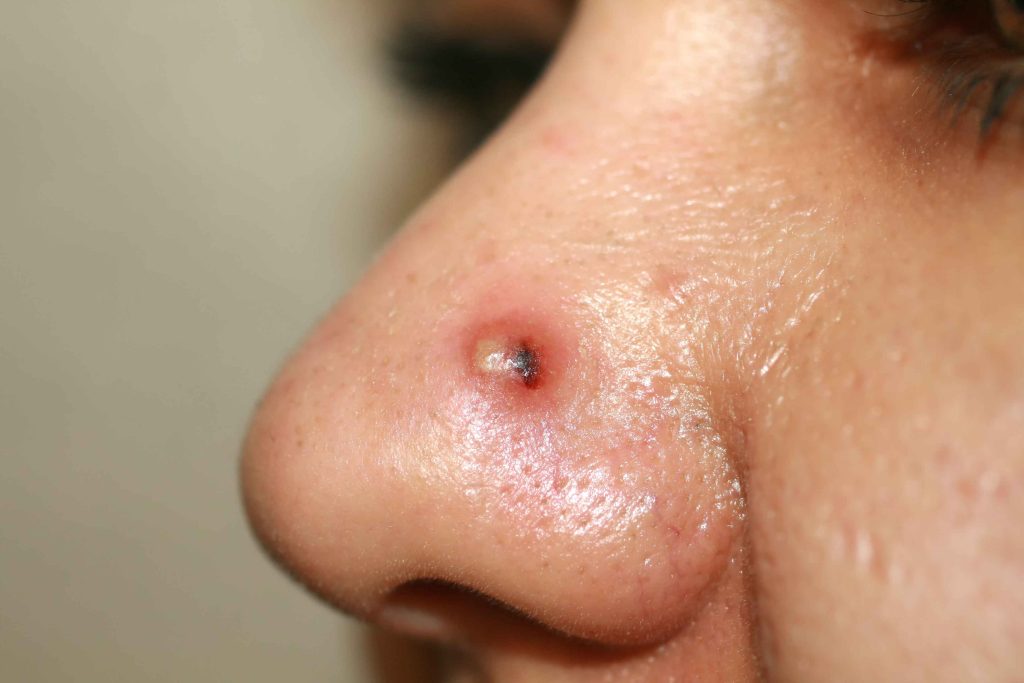
This inflammation could be not a whitehead, but—scary words alert—a pustule, papule, nodule, or cyst, which are larger types of pimples and need medical attention. You should never squeeze this type of pimple because its core is too deep in the skin, and you may force more bacteria there. This could result in spreading the inflammation and leaving post-acne marks.
So, what should you do with them? It’s best to allow them to heal naturally. Even better, seek advice from a dermatologist to address the root cause of these painful guys. An expert can help you better understand your skin, develop an effective skincare routine within your budget, or prescribe appropriate medications and treatments to reduce the occurrence of those pesky spots.
OK, but What Pimples to Pop Then?
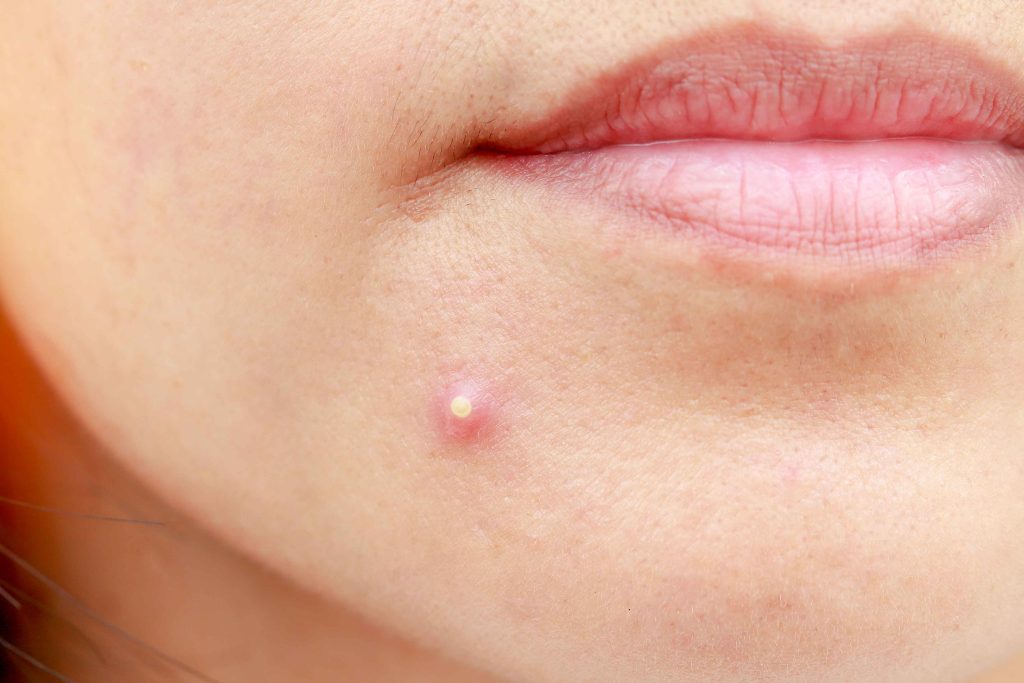
The first condition for getting the “popping pass” is that your skin isn’t generally acne-prone, and getting a pimple is more of a “Wow, that’s something I didn’t expect!” than “another one, thanks” kind of situation. Getting a new zit might be a “side effect” of your indulging in too much tiramisu the other night or sweating excessively after a good session in the gym. Hormonal fluctuations during your menstrual cycle can also bring about occasional breakouts, as well as not changing your pillowcases on time or working through a stressful life period.
The second condition for considering draining a spot is that it isn’t a baby anymore and already has that raised bump with a white eye on its surface. You may even feel like it’s ready to burst, but it shouldn’t hurt to the touch.
How to Pop a Pimple Right
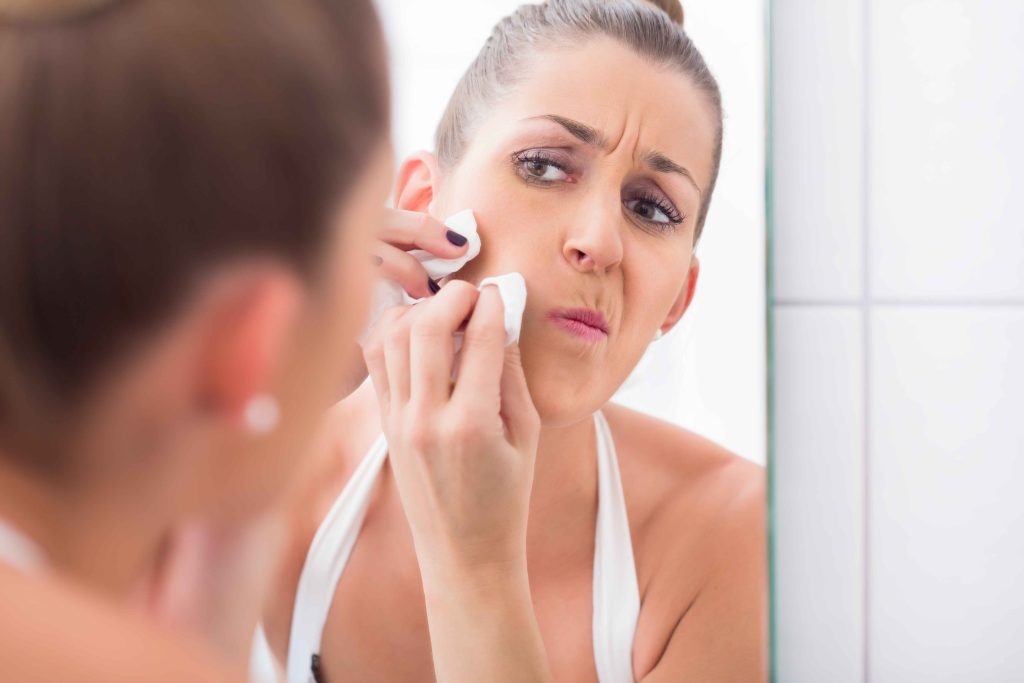
Double-checked if your pimple is eligible for popping? Here are the essential steps to ensure this process goes smoothly and safely.
- Wash your hands thoroughly with water and soap. Make sure your fingernails are clean, too.
- Cleanse your face to remove any dirt or oil buildup.
- Wrap your pointer fingers in sterile cloth napkins (available at pharmacies) or just clean ones.
- Position your pointer fingers (not fingernails) around the pimple (not on it) at a 45–60 degree angle, avoiding excessive pressure on the skin. Gently squeeze the pimple downwards and then upwards to let the pus come out, leaving the rest of the spot intact. It may bleed a bit—this usually signals you’ve squeezed all the gunk.
- Carefully dab the popped pimple with an antiseptic solution several times a day until a protective scab forms, and do your best to not disrupt it.
The After-Pop Care
- Before going to bed, change your pillowcase and ensure your hair does not touch the affected area.
- During the next 3 days, let the spot area rest well after the procedure and avoid touching it—if you know you can’t get your hands off the spot, opt for a pimple patch. Plus, declare it a makeup-free zone (the struggle not to dab on a bit of concealer is so real!). In general, the less you pick at it, the quicker this area will bounce back to its usual self.
If Not to Pop, Then What?
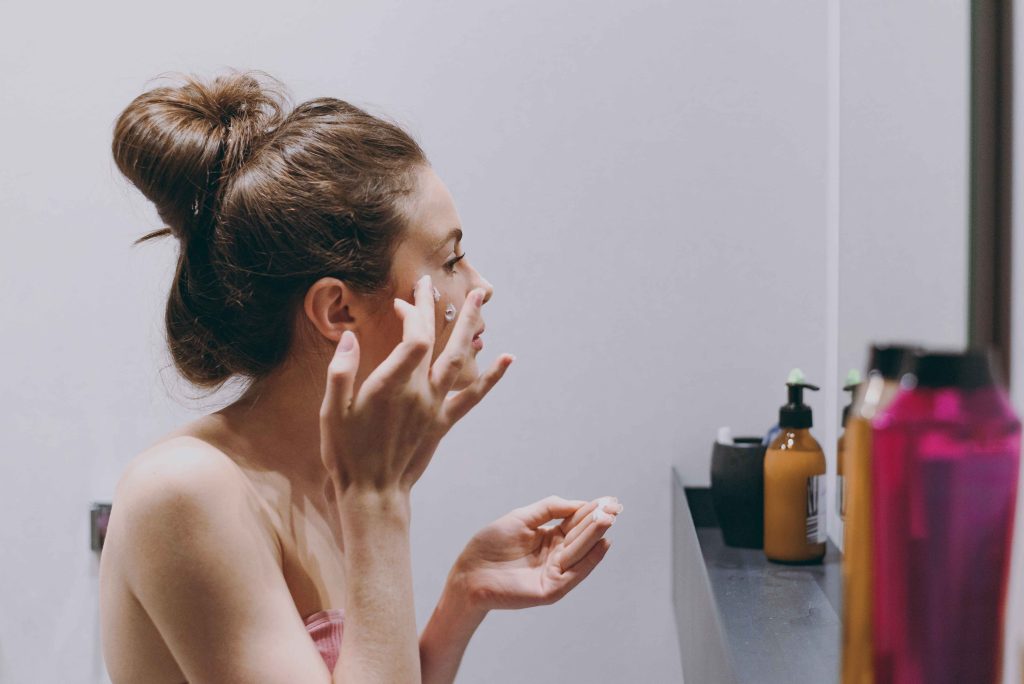
Not sure about what kind of pimple you’re dealing with? Or popping it seems too risky a procedure for you? Prevention before intervention—that’s the approach we encourage you to follow in skincare. Try using a topical over-the-counter spot treatment containing salicylic acid, niacinamide, or zinc on your zit—these hard-hitting ingredients will help soothe the redness and make the spot less visible. By the way, If you’re just starting with conscious skincare and struggling to figure out which products to choose for your skin’s needs, an ingredient scanner might be a great help. You check if your potential buy suits you and if it contains any ingredients that may clog pores and bring about more breakouts.
On a broader scale, it might be a good call to reassess your skincare routine and habits to reveal the root causes of your skin issues. For example, one common culprit could be insufficient exfoliation. Instead of abrasive scrubs, consider incorporating acids into your beauty regimen. Salicylic and azelaic acids are excellent choices for oily and combination skin types, while mandelic and lactobionic acids are gentler options for those with dry or normal skin.
But you know what could take your routine to the next level? Consulting a dermatology expert. We know we’ve already mentioned it, but tapping into professional advice is so worth it! Armed with the right products and consistent care, you may find yourself saying goodbye to the need for popping pimples altogether.
FAQ
-
Where do I start with OnSkin?
Download the app and think of a product you’d like to know more about. Then, go to the main screen and choose how you’d like to get the info —by manually looking it up in the search bar, by scanning its barcode, or by simply taking a picture of the packaging. Once you’ve done any of these, you can see how safe the product is and if it suits your skin or hair (if this analysis is available).
-
What is Safety Rating, and how is it calculated?
In OnSkin, we base product rates on ingredients. Each is closely studied by our medical team and then evaluated. This way, each product gets a score from 0 to 100, with 100 as the safest level.
Safety Levels
- Excellent (76–100)
- Good (51–75)
- Not great (26–50)
- Bad (0–25)
These scores are backed by the latest scientific studies. You can find links to the resources we’ve used on each ingredient page. To assess the safety of product ingredients, we evaluate them according to the following parameters/criteria
- Endocrine disruption risk / Reproductive toxicity
Indicates the probability of mimicking, blocking, or interfering with the body hormones.
- Сarcinogenicity
Measures the potential risk of inducing cancer.
- Allergy risk
Estimates the probability of an allergic reaction.
- High concentration alert
Determines the risk of being unsafe in certain amounts.
-
What is Skin Match?
Based on the info you input about your skin type, age, skin care goal, and other “settings,” OnSkin checks how well a product is tailored to your unique skin needs — it’s basically like a dermatologist helping you find the right products, minus the fees and the long wait. The product you’re checking might be labeled as It’s a match!, Hit-or-miss, or Not a match for you. The app also detects ingredient groups such as Anti-acne, Anti-inflammatory, Moisturizes, May be drying, Comedogenic, and others — by tapping one, you see exactly what ingredients from this or that group are in the product.
-
I seem to have a problem with using the app. Who should I contact?
Please reach out to us at [email protected], and we’ll carefully look into your issue. Your ideas for improving the app are also very welcome!
-
Do you have an Android version?
Not yet! Hey Android users, we hear you, and we're thinking about making an Android version, but we haven't started the development yet.
Tracker Sent!
It’s on the way to your inbox.


